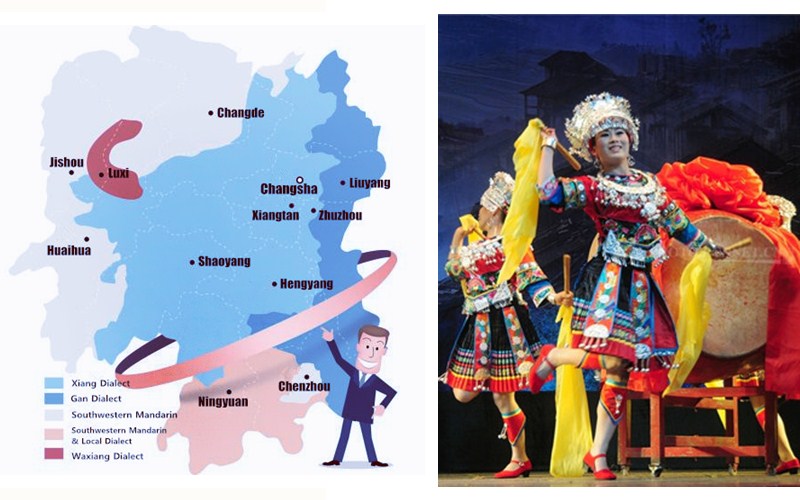Skype: neodalle-travel
Tel: +86 135 7447 2266
E-mail: sales@zhangjiajieholiday.com


Southwest mandarin, as the second major dialect in Hunan, is mainly distributed over western, northern and southern Hunan. Hakka dialect is commonly used in some areas in southeast Hunan, such as Rucheng, Guidong, Youxian, Chaling and Pingjiang counties.
According to the historical records, the ancient Chu dialect took shape in the Spring and Autumn period (770 BC – 476 BC), with the "southern Chu" dialect in the Han dynasty (202 BC - 220) being the direct source of the Xiang dialect. Immigration is considered as the main reason for the Hunan dialect's coming into being. Before the Five Dynasties (907-960), immigrants from North China came to Hunan, whose dialect formed the ancient "Chu dialect" in Hunan and gradually evolved into the Xiang dialect, further branching out southwest mandarin and local dialect. After the Five Dynasties, immigrants were mainly from southeast China including Jiangxi, Fujian and Guangdong whose dialects developed into early the Gan dialect, the Hakka dialect and local dialects.
The surrounding major dialects and mandarins have also exerted an influence on the formation and development of the mandarin in Hunan's border area. The language of the minority groups, especially in remote areas, also has played a certain role in the development of these dialects.
 Ask Questions ?
Ask Questions ?